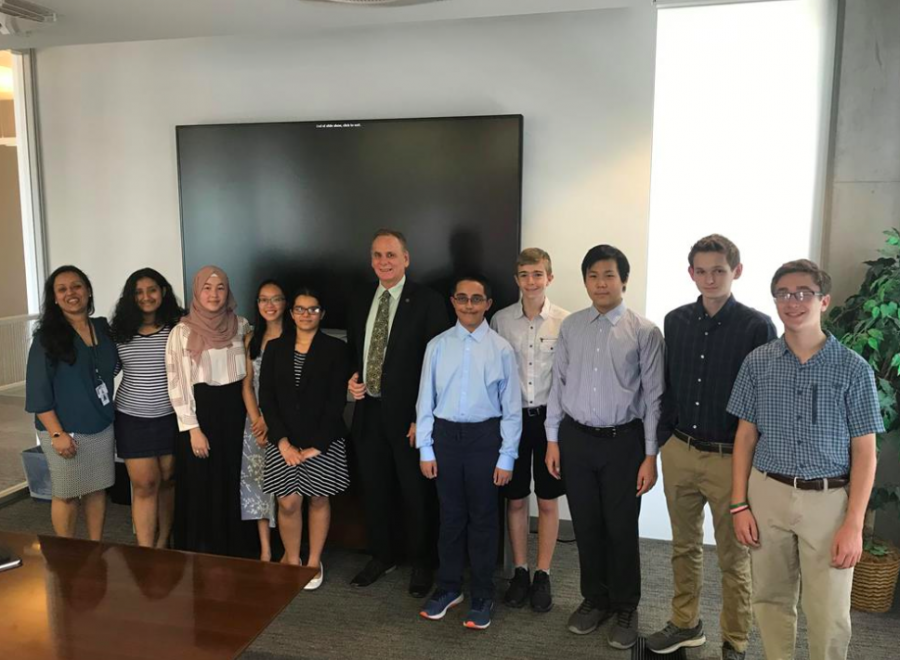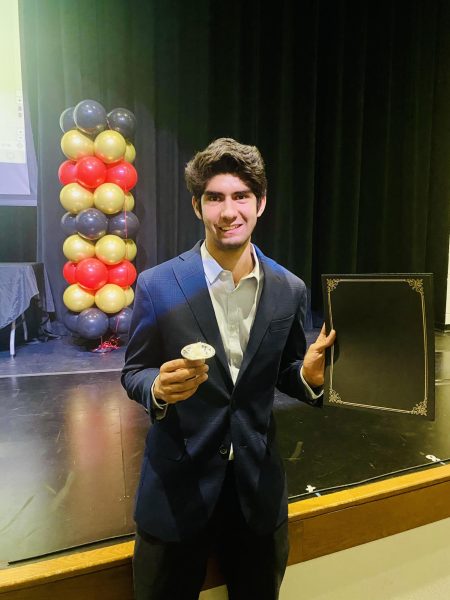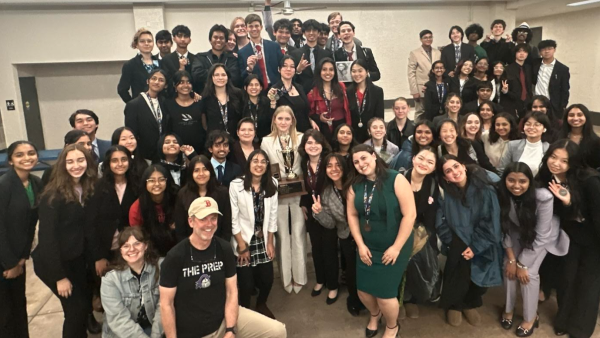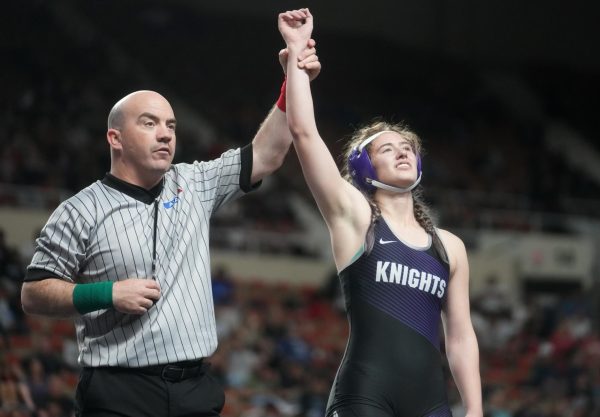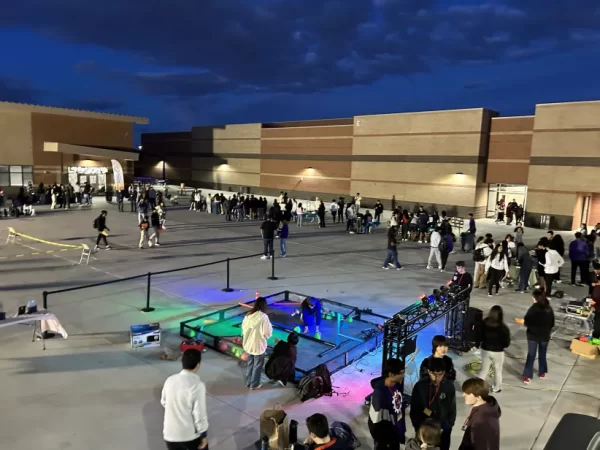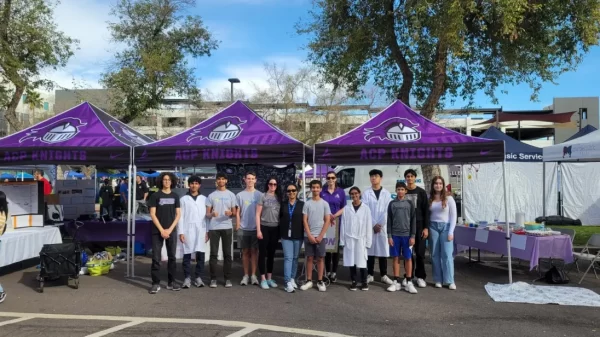The Knights Innovators: Turning Vision into Reality
A group of ACP-Erie’s young scientists, the Knights Innovators, just earned an extraordinary accomplishment! They were recently awarded two grants and a preliminary patent so that they can put their idea, a heat-stress-monitoring hat, into operation. The first grant is $2,500 from INTEL 40 for 40, and the second grant is $50,000 through Healthy Urban Environments (HUE). Over the next two summers, they will be collecting data and developing a minimum viable product.
The Knights Innovators group includes sophomores Sohani Sandhu, Abraham Troop, Kailtyn Lai, and Omina Nematova, along with freshmen Alex Kroumov, Jacob Kaufman Warner, Nealin Banerjee, Diya Nath and Daniel Wu. To learn more about the Knights Innovators and their grant awards, I interviewed Sohani Sandhu:
Q1: How long have you been involved with the Knights Innovators group?
A1: I have been around since the origin of the group, back in January of 2019. Mrs. Nath chose us four former freshmen (Abraham, Omina, Kaitlyn and I), and from there we tested and interviewed other eighth graders until we narrowed it down to the five best students that had shown the most interest in the project, as well as the most promise in making this a success (Alex, Jacob, Nealin, Diya, and Daniel). From there we began spitballing and developing ideas, and in a year’s time, we’ve reached the stage that we are in today!

Q2: What is your favorite part of being a part of the Knights Innovators?
A2: That’s such a hard question — there are so many things I love! I’d have to say, though, the best thing about this group is how passionate everyone is. Whenever we meet, everyone is eager to contribute as much as they can in order to keep this idea going — there’s no other way we could have reached this point. We all have the desire to make this project more than just something extra on our résumés – we want to see this product helping Arizonans, saving lives daily. Each and every person on the team is excited to see how far this project goes, and we have no intent of stopping!
Q3: Could you describe what the group earned grants for?
A3: Our group has so far earned two grants – totaling a whopping $52,500. The first grant that we received is from the Healthy Urban Environments (HUE) Initiative, which is a part of ASU’s Julie Ann Wrigley Global Institute of Sustainability. The HUE grant this year was specifically geared toward heat problems, which was extremely lucky, as our project prevents heat stroke from inflicting individuals across the state. They granted us $50,000 to develop our prototype and to test it with student athletes across the district. We are currently in the process of finishing up our first prototype, which we then need to replicate 150 times for testing next summer. Shortly after, we also received $2,500 from INTEL 40 for 40, through the Arizona Education Foundation. This grant is given to teachers across the state to fund STEAM projects, and we were one of the lucky recipients.
Q4: How does the heat-stress-monitoring device work?
A4: This device is a hat with built-in sensors to monitor your vitals. The hat itself consists of a wired rim with a detachable wicking fabric that can be removed, wet with water, and worn in order to keep the user’s head cool for a couple of hours (due to evaporative cooling). On the rim of the hat are three sensors: a temperature sensor, pulse sensor, and accelerometer. The temperature and pulse sensors take readings every second and detect changes in the vitals. When extreme changes in vitals are detected, alerts are sent to the user’s phone through an app, warning the user to get out of the sun and drink some water. If the accelerometer detects rapid downward movement followed by inactivity (symbolic of fainting) in conjunction with high temperature and pulse, the user’s emergency contacts are called and informed that the user is suffering from heat stroke.
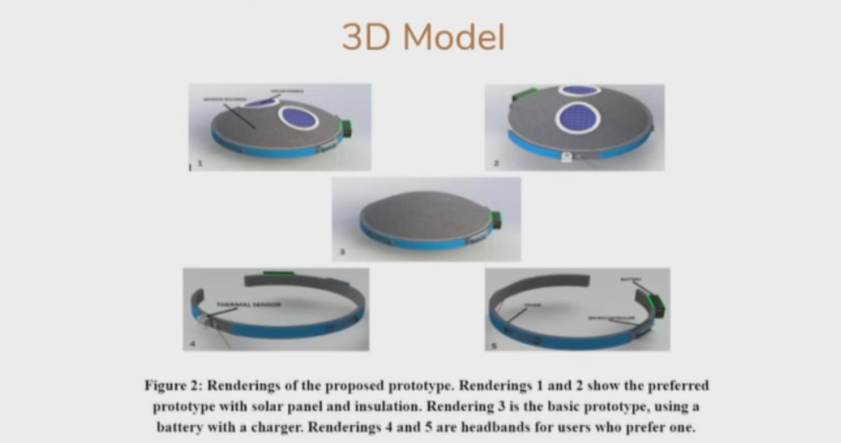
Here’s a model of the heat-stress-monitoring hat design.
Q5: How did your group come up with this idea?
A5: When we began our brainstorming sessions, the first problem that came into mind was the Arizona heat. When people think of Arizona, the first thing that comes to mind is the blistering heat that is more often than not a nuisance. Our first idea was to prevent or treat dehydration, but that proved to be easier said than done, since there was no cheap, effective, and non-invasive way to accomplish this task. The next idea we then visited was heat stroke. We had all had our own encounters with heat exhaustion, but when we dug deeper in our research, we realized it was a larger problem than we thought, with about 180 people dying from heat stroke every year in Phoenix alone. From there, we brainstormed ideas on how to bring down the number of deaths from the heat. We began to focus on prevention rather than treatment of heat stroke, since it is better and easier to prevent a harmful thing from ever happening in the first place rather than trying to do damage control when something bad does happen. From research, we realized that heat stroke is when the brain overheats and can no longer maintain homeostasis, which is why we decided to make a cooling hat that monitors temporal pulse and core temperature to effectively solve this problem.
Q6: How will the group be moving forward after receiving the grants?
A6: Using the funding from the grants, we are currently finishing our minimum viable product, which is basically our first functioning prototype. After making about 150 of these prototypes, next summer, we will be running experiments with student athletes across the district to see if the hats do indeed work. After this testing, we will likely continue further with development of the prototypes, solving any kinks until a marketable product is achieved. Until then, we have been taking business classes sponsored by Chandler Innovations, which is an organization that supports startups in the City of Chandler. We already have a preliminary patent, but we are now in the process of finalizing the patent. We will also soon form an LLC, hoping to turn this project into a full-fledged company that brings in revenue. Our main goal, however, is to bring the number of deaths from heat stroke in Arizona down from 182 to 0. Nobody should ever have to deal with a loved one’s death due to the heat, and with our product, we are hoping that from now on nobody will ever need to.
Once again, congratulations to the Knights Innovators for earning these grants. We look forward to seeing them put their innovative ideas into action in the upcoming months!
